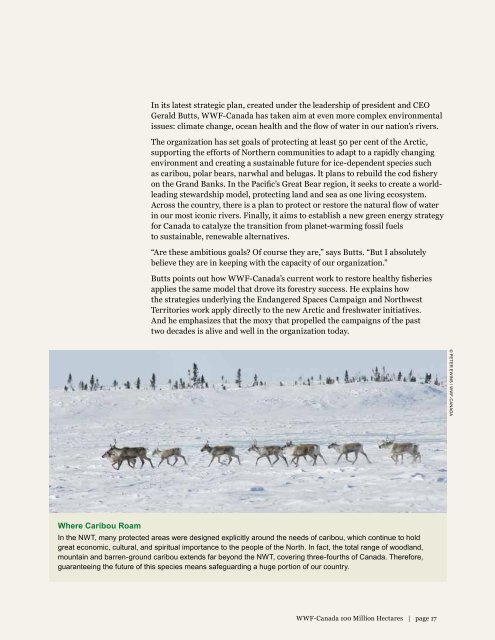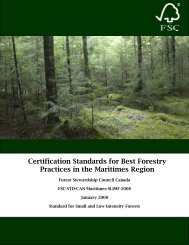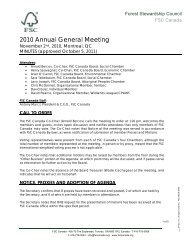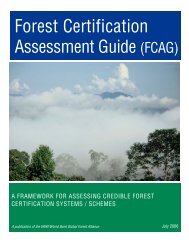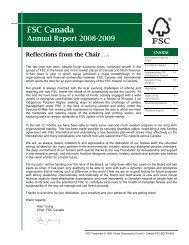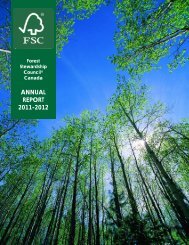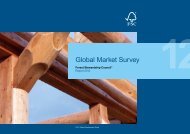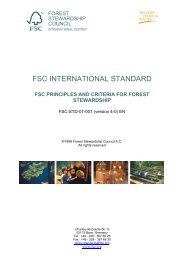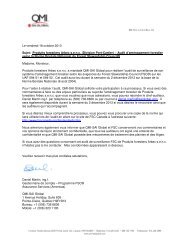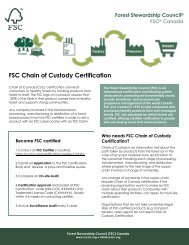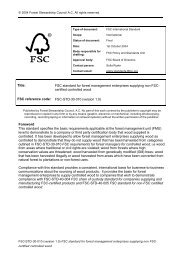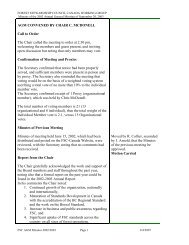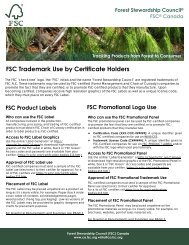“Without WWF,there wouldn’thave been aProtected AreasStrategy.”– Bill CarpenterIt took another six years, a lot more investment and a lot <strong>of</strong> negotiations with thefederal government, but protect it they did. By the time agreements were brokeredwith all six Akaitcho Dene communities around Great Slave Lake, the protectedarea had grown to encompass more than <strong>10</strong> million hectares – the biggest everin Canadian history – consisting <strong>of</strong> a proposed 3.3 million hectare national parknestled within an even larger area withdrawn from industrial development.From promise to protection“We accomplished a lot,” says Carpenter as he reflects on more than a decade atthe helm <strong>of</strong> WWF-<strong>Canada</strong>’s work in the Northwest Territories. “Without WWF,there wouldn’t have been a Protected Areas Strategy.”It was Carpenter who initially talked his way into the government working groupin charge <strong>of</strong> developing the strategy in the late 1990’s. He organized meetingswith Aboriginal groups, other conservation organizations, government andindustry. He submitted memos and briefing notes and ultimately helped draftthe Protected Areas Strategy itself, making sure it included the scientific elements<strong>of</strong> protected areas planning.Next came implementation. Over the next decade, Carpenter returned tocommunities across the territory, meeting leaders face-to-face, fosteringrelationships and investing dollars to build local planning capacity.It was a slow, painstaking process, but it paid <strong>of</strong>f – and not just in Lutsel k’e.Carpenter lists <strong>of</strong>f just a few <strong>of</strong> the many candidate protected areas WWF-<strong>Canada</strong> helped communities to put forward: Edéhzhíe, Saoyú-?ehdacho,Nááts’ihch’oh, Shúhtagot’ine Néné, Ka’a’gee Tu. Today, 20 areas <strong>of</strong> interesthave been identified under the Protected Areas Strategy and nearly 20 millionhectares have been reserved for conservation.results <strong>of</strong> thenw t protecteda re as str ategy9.2200031.2million hectares20<strong>10</strong>CARTS (2009), CEC (20<strong>10</strong>), WDPA (20<strong>10</strong>), and INAC (20<strong>10</strong>).“It comes with building trust. It comes with hard work and continuing to givesupport and write reports and make sure that the deliverables are made,” saysCarpenter. He pauses before reiterating the final point: “We always made surethat at the community level, the First Nations level, the deliverables were made.”The pathway to the possibleIn June 20<strong>10</strong>, WWF-<strong>Canada</strong> wound down a 13-year commitment to the ProtectedAreas Strategy, to the disappointment <strong>of</strong> many who had hoped the organizationwould stay involved indefinitely. But just as they had known when to call anend to the Endangered Spaces Campaign and when to step back from the FSCtrenches, the organization’s leaders were convinced that the Protected AreasStrategy could now succeed on its own.According to Hummel, now president emeritus, WWF-<strong>Canada</strong>’s role is to fosternew, bold approaches to conservation. Once an initiative is able to continueunder its own steam, it’s time to begin pioneering something else.ons <strong>of</strong> hectares)WWF-<strong>Canada</strong> <strong><strong>10</strong>0</strong> <strong>Million</strong> <strong>Hectares</strong> | page 1639.2 ha
In its latest strategic plan, created under the leadership <strong>of</strong> president and CEOGerald Butts, WWF-<strong>Canada</strong> has taken aim at even more complex environmentalissues: climate change, ocean health and the flow <strong>of</strong> water in our nation’s rivers.The organization has set goals <strong>of</strong> protecting at least 50 per cent <strong>of</strong> the Arctic,supporting the efforts <strong>of</strong> Northern communities to adapt to a rapidly changingenvironment and creating a sustainable future for ice-dependent species suchas caribou, polar bears, narwhal and belugas. It plans to rebuild the cod fisheryon the Grand Banks. In the Pacific’s Great Bear region, it seeks to create a worldleadingstewardship model, protecting land and sea as one living ecosystem.Across the country, there is a plan to protect or restore the natural flow <strong>of</strong> waterin our most iconic rivers. Finally, it aims to establish a new green energy strategyfor <strong>Canada</strong> to catalyze the transition from planet-warming fossil fuelsto sustainable, renewable alternatives.“Are these ambitious goals? Of course they are,” says Butts. “But I absolutelybelieve they are in keeping with the capacity <strong>of</strong> our organization.”Butts points out how WWF-<strong>Canada</strong>’s current work to restore healthy fisheriesapplies the same model that drove its forestry success. He explains howthe strategies underlying the Endangered Spaces Campaign and NorthwestTerritories work apply directly to the new Arctic and freshwater initiatives.And he emphasizes that the moxy that propelled the campaigns <strong>of</strong> the pasttwo decades is alive and well in the organization today.© Peter Ewins / WWF-<strong>Canada</strong>Where Caribou RoamIn the NWT, many protected areas were designed explicitly around the needs <strong>of</strong> caribou, which continue to holdgreat economic, cultural, and spiritual importance to the people <strong>of</strong> the North. In fact, the total range <strong>of</strong> woodland,mountain and barren-ground caribou extends far beyond the NWT, covering three-fourths <strong>of</strong> <strong>Canada</strong>. Therefore,guaranteeing the future <strong>of</strong> this species means safeguarding a huge portion <strong>of</strong> our country.WWF-<strong>Canada</strong> <strong><strong>10</strong>0</strong> <strong>Million</strong> <strong>Hectares</strong> | page 17


